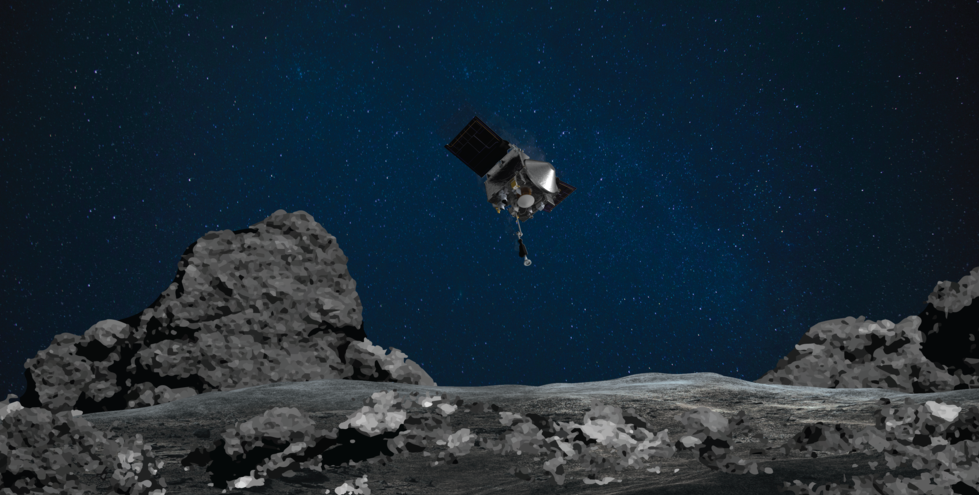
Nasa’s audacious mission to grab a piece of an asteroid has been successful, the space agency said on Wednesday morning, as data show its Osiris-Rex spacecraft has managed to “tag” the object and may now commence its journey back to Earth.
According to Nasa, the pinnacle of the operation came as the ancient but well-preserved asteroid, known as Bennu, was more than 321 million kilometres from our planet.
Radio signals received from the spacecraft confirmed that it had touched the asteroid as planned, but scientists will still have an agonising wait for more signals to know if asteroid material was indeed picked up, and in the required quantity.
Nonetheless, principal investigator from the University of Arizona Dante Lauretta told BBC News: “The team is exuberant; emotions are high; everyone is proud.”
“This was the key milestone of this mission. Now it’s a few days to figure out how much of this amazing sample we got that we’ve been thinking about for decades,” added Thomas Zurbuchen, Nasa’s associate administrator for science.
The aim was to acquire at least 60g of material, but the probe has the capacity to grab around a kilo.
Scientists believe that analysis of Bennu’s surface, consisting mostly of grit and dust, could provide insights into the formation of the Solar System more than 4.5 billion years ago.
According to Nasa, if the spacecraft has fetched the right material in its “touch and go” (TAG) mission, it will commence its journey back to Earth in 2021. However, they will make another attempt in January if things don’t go the way they were planned.
Either way, the spacecraft wouldn’t reach the surface of the Earth before 2023.
The van-sized spacecraft was aiming for the relatively flat middle of a tennis court-sized crater named Nightingale – a spot comparable to a few parking places here on Earth. Boulders as big as buildings loom over the targeted touchdown zone.
While Nasa has previously brought back comet dust and solar wind particles, it has never attempted to sample one of the nearly one million known asteroids lurking in our Solar System – until now.
Japan, meanwhile, expects to get samples from asteroid Ryugu in December – in the milligrams at most – 10 years after bringing back specks from asteroid Itokawa.
